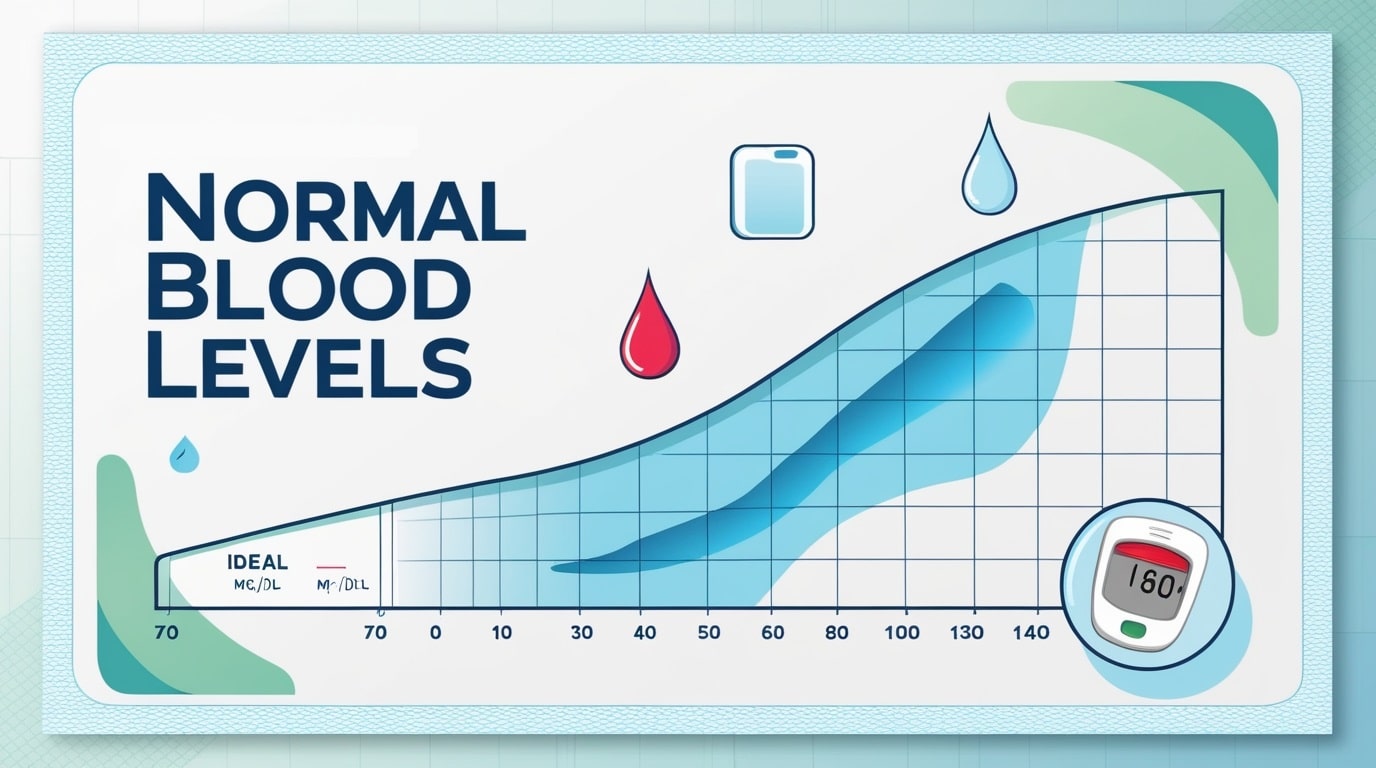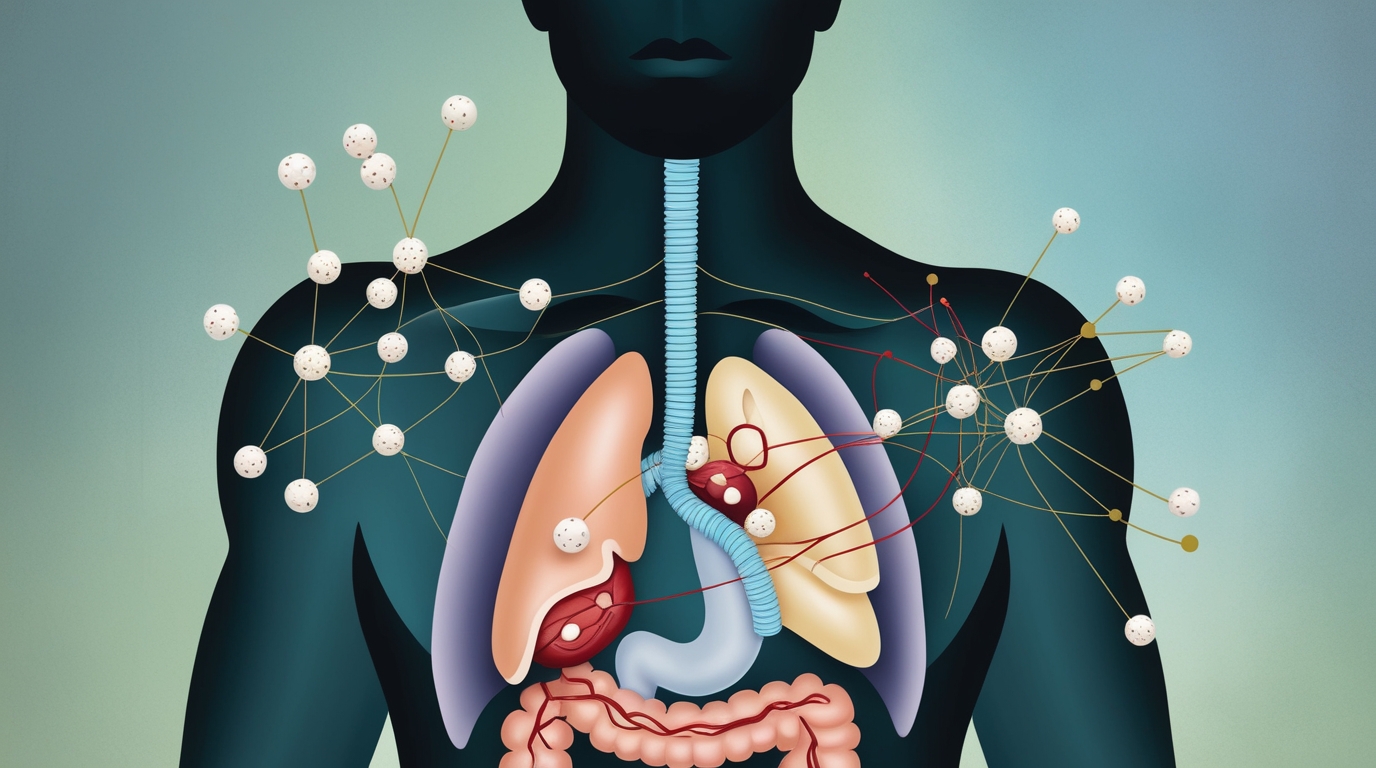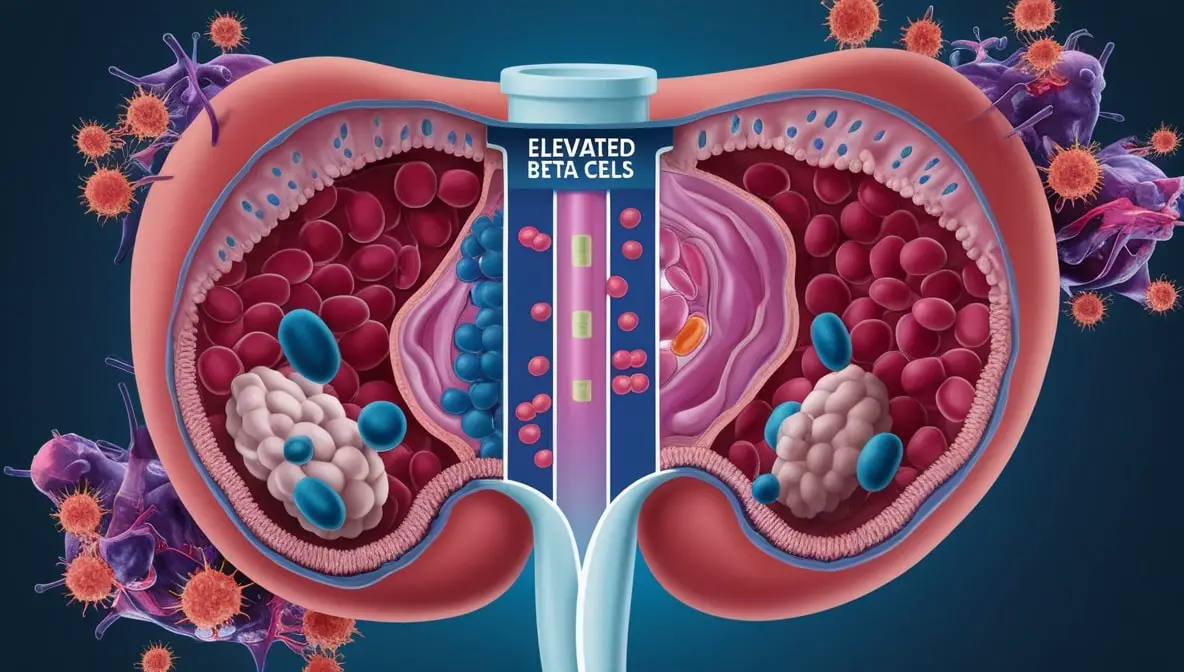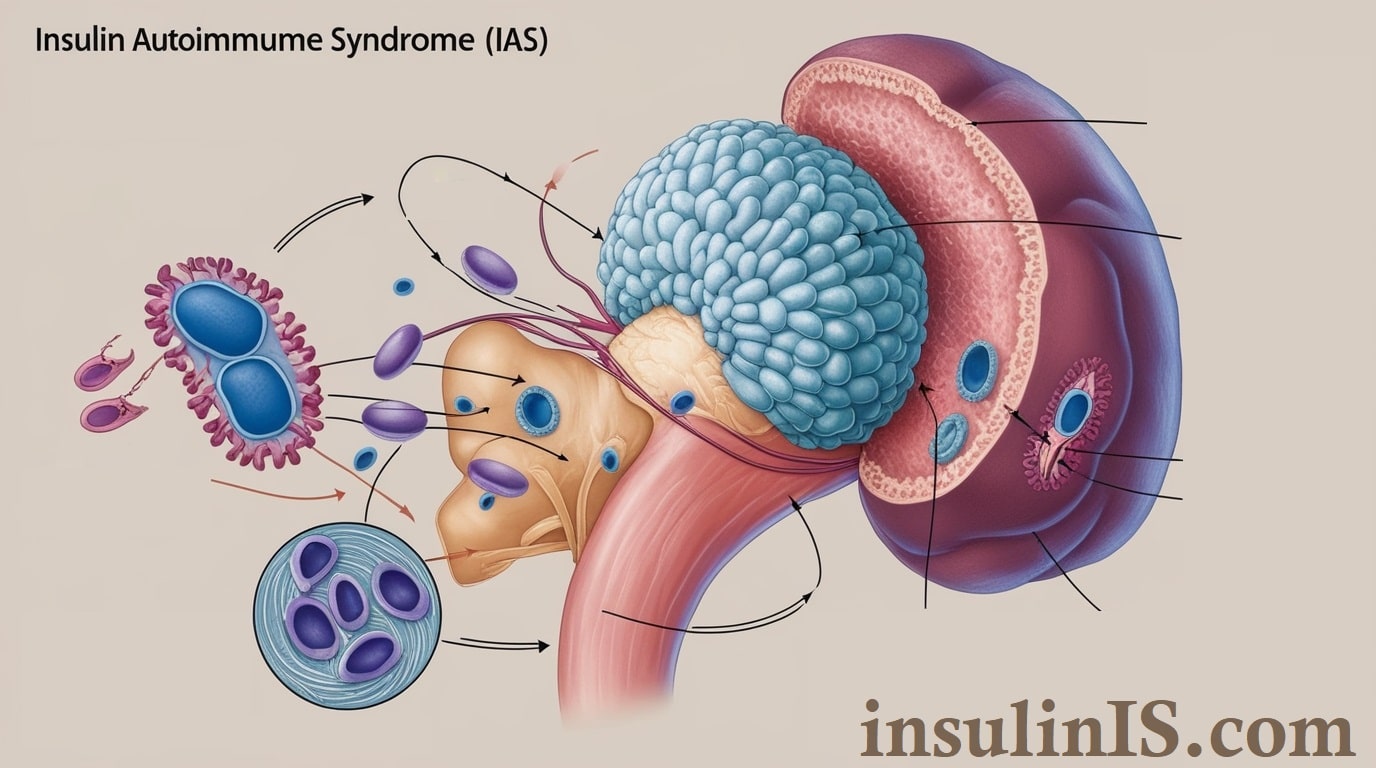Managing diabetes well means knowing how to dose insulin. There are two main ways: AC (before meals) and HS (bedtime) dosing. These methods are key to keeping blood sugar stable all day. By looking into these strategies, we see how they help manage glucose levels in diabetes treatment.
Pre-prandial insulin and nocturnal insulin serve different roles in diabetes care. In this article, we’ll dive into the specifics of these dosing methods. We’ll talk about their advantages and downsides. Knowing this can help people make smart choices about their diabetes treatment plan.
Key Takeaways
- AC insulin dosing is given before meals to control blood sugar before eating.
- HS insulin dosing helps keep blood sugar stable at night.
- Understanding these dosing strategies can lead to better diabetes management.
- Benefits and possible drawbacks exist for both AC and HS insulin dosing.
- Getting advice from healthcare professionals can help tailor a diabetes treatment plan.
Understanding AC Insulin Dosing
AC (before meals) insulin dosing is key in managing diabetes. It helps control blood sugar levels before meals. Rapid-acting insulin or bolus insulin is used to manage glucose spikes after eating.
What is AC (Before Meals) Dosing?
AC dosing means taking insulin just before eating. It helps manage the blood sugar rise after meals. This method uses mealtime insulin that works fast in the blood.

A sle
A sleek, modern vial of rapid-acting insulin, surrounded by medical elements like syringes and glucose monitors, set against a bright, clean background. The vial is detailed with light reflections, and the focus is on the texture of the liquid inside, conveying a sense of precision and efficacy in diabetes management.
Benefits of AC Dosing
AC dosing has many benefits. It helps manage blood sugar spikes after meals well. It also lets users adjust insulin doses based on their meal plans. This makes diabetes management more personal.
- Effective Control of Postprandial Blood Sugar
- Flexibility and Adaptability in Dosing
- Enhanced Predictability of Blood Sugar Levels
Potential Drawbacks of AC Dosing
AC dosing has some downsides too. A big risk is low blood sugar if meals are delayed or missed. Counting carbs accurately is also needed to keep blood sugar stable. This can be hard for some people.
- Risk of Hypoglycemia with Delayed Meals
- Need for Accurate Carbohydrate Counting
- Potential for Variability in Blood Sugar Levels
Understanding HS Insulin Dosing
HS (Bedtime) dosing means taking insulin at night to keep blood sugar stable while you sleep. It uses long-acting insulin to control blood sugar levels. This helps ensure your blood sugar is steady in the morning.
What is HS (Bedtime) Dosing?
HS (Bedtime) dosing is about taking insulin at night to manage blood sugar. It uses long-acting insulin to act like the insulin in people without diabetes. This helps keep blood sugar stable all night long.
Benefits of HS Dosing
- Overnight glucose control: HS dosing helps keep blood sugar stable at night. It reduces the chance of low blood sugar and keeps morning blood sugar steady.
- Consistency: Taking basal insulin at bedtime helps maintain a steady insulin action. This is key for managing blood sugar levels all night.

A serene bedroom scene at night, featuring a bedside table with an insulin vial and syringe, a digital glucose meter displaying a stable reading, soft moonlight filtering through a window, and a peaceful sleeping figure in the background, symbolizing effective overnight glucose control.
Potential Drawbacks of HS Dosing
- Mismatch in insulin action: Basal insulin might not match your body’s needs perfectly. This can lead to uneven blood sugar control.
- Postprandial glucose control: HS dosing mainly focuses on nighttime stability. It may not control blood sugar after meals as well, so you might need other strategies.
Importance of Timing in Insulin Dosing
When it comes to diabetes, when you take insulin matters a lot. Matching insulin shots with your body’s natural sugar highs and lows helps control blood sugar better. It also lowers the risk of problems from taking too much insulin.
It’s key to know how different insulins work. Each type acts differently, affecting blood sugar levels in its own way. By matching insulin with your body’s needs, you can better manage your blood sugar.
Keeping an eye on your blood sugar is also important. Regular checks help find the best times to take insulin. They also help adjust doses as your body’s needs change during the day.
Here’s a look at how different insulins work:
| Type of Insulin | Onset | Peak | Duration |
|---|---|---|---|
| Rapid-acting | 10-30 minutes | 30 minutes – 3 hours | 3-5 hours |
| Short-acting | 30-60 minutes | 2-5 hours | 5-8 hours |
| Intermediate-acting | 1.5-4 hours | 4-12 hours | 12-18 hours |
| Long-acting | 0.8-4 hours | Minimal peak | Up to 24 hours |
Getting the timing right for insulin shots is key to keeping blood sugar stable. This helps avoid too much or too little sugar in the blood. By using this knowledge and checking blood sugar often, people with diabetes can manage their condition better.
Blood Sugar Management
Managing blood sugar is key for those with diabetes. AC (before meals) and HS (bedtime) insulin dosing strategies help keep blood sugar in check. They make sure people hit their blood sugar targets.
Impact of AC Dosing on Blood Sugar Levels
AC insulin dosing is taken before meals to fight high blood sugar after eating. It helps keep blood sugar steady all day. But, it’s important to watch for low blood sugar, which can happen with meal changes.
Impact of HS Dosing on Blood Sugar Levels
HS insulin dosing is taken at night to keep blood sugar stable while you sleep. It helps prevent low blood sugar at night and keeps fasting blood sugar in check in the morning. This dosing strategy is vital for good blood sugar control all day and night.
| Dosing Strategy | Primary Benefit | Key Consideration |
|---|---|---|
| AC Insulin Dosing | Controls post-meal hyperglycemia | Frequent monitoring required |
| HS Insulin Dosing | Stabilizes blood glucose overnight | Prevents nocturnal hypoglycemia |
Knowing how to use AC and HS insulin dosing helps patients manage their blood sugar better. It meets their specific needs and helps them stick to their diabetes plan.
Patient Lifestyle Considerations
Managing diabetes well means understanding meal and sleep patterns. These are key to keeping blood sugar in check.
Meal Patterns and Their Influence
What you eat affects how much insulin you need. People with irregular eating times struggle to keep blood sugar stable. Adjusting insulin doses to match meal times helps avoid big swings.
Having a regular meal schedule helps manage glucose better. It ensures insulin is absorbed consistently, lowering the chance of problems.
Sleep Patterns and Their Influence
Sleep affects how well insulin works. Poor sleep can lead to low blood sugar at night. Knowing a patient’s sleep habits helps tailor their care for better blood sugar control.
Improving sleep can make insulin work better. Matching insulin doses to sleep patterns helps manage diabetes better. This approach reduces risks and improves treatment outcomes.
| Aspect | Impact on Insulin Dosing |
|---|---|
| Dietary Habits | Needs frequent adjustments to match meal timings and sizes for optimal glucose control. |
| Eating Schedule | Regular schedules facilitate consistent insulin absorption, reducing blood sugar fluctuations. |
| Sleep Patterns | Irregular sleep can lead to nocturnal hypoglycemia; structured sleep enhances insulin sensitivity. |
| Lifestyle Adjustments | Tailored modifications improve overall diabetes management and treatment efficacy. |
Comparative Studies on AC vs HS Dosing
Recent insulin regimen research has looked into AC (before meals) and HS (bedtime) insulin dosing. These diabetes clinical trials aim to find out which dosing is more effective. They also look at how it affects blood sugar control, risk of low blood sugar, and overall quality of life for people with diabetes.
A key study analyzed data from several diabetes clinical trials. It focused on how each dosing method affects blood sugar levels. The study found that each method has its own benefits and drawbacks for patients.
Evidence indicates that AC dosing may provide more immediate glycemic control, while HS dosing could potentially reduce overnight hypoglycemia risks.
To make it easier to compare, here are the main findings:
| Aspect | AC Dosing (Before Meals) | HS Dosing (Bedtime) |
|---|---|---|
| Glycemic Control | Immediate control | Stable overnight levels |
| Hypoglycemia Risk | Higher daytime risk | Lower nighttime risk |
| Quality of Life | Varies with meal routine | Improved sleep quality |
These findings from insulin regimen research and diabetes clinical trials are very important. They help shape future advice and tailor diabetes care plans. The goal is to improve the quality of life for people with diabetes.
Clinical Recommendations on Insulin Dosing
Leading diabetes groups like the American Diabetes Association (ADA) have set guidelines for insulin dosing. These guidelines stress the need for personalized treatment plans. This shows how important therapy personalization is.
The ADA says timing and dosing are key for AC insulin dosing (before meals). It helps control blood sugar after eating. Patients should follow their endocrinologist advice to manage their blood sugar well.
HS insulin dosing (bedtime) is about keeping blood sugar stable at night. Doctors adjust these doses based on diabetes guidelines. They look at the patient’s blood sugar levels at night.
Monitoring and adjusting insulin doses is critical. Endocrinologists suggest making every insulin prescription unique. They consider the patient’s lifestyle, diet, and health conditions. This makes both AC and HS dosing more effective.
| Aspect | AC Dosing | HS Dosing |
|---|---|---|
| Timing | Before Meals | Bedtime |
| Primary Focus | Postprandial Glucose Control | Overnight Glucose Stability |
| Guidelines | ADA & Endocrinologist Recommendations | ADA & Endocrinologist Recommendations |
| Key Considerations | Meal Timing, Carbohydrate Content | Prevailing Nighttime Blood Sugar Trends |
Using these diabetes guidelines well can greatly improve a patient’s life. By following endocrinologist advice and adjusting as needed, people can better control their blood sugar. This can also lower the chance of serious health problems.
Personalized Diabetes Management Plans
Creating a diabetes management plan that fits each person is key to good care. This method looks at many factors to make the treatment plan work best.
Factors Influencing Dosing Decisions
When making a diabetes treatment plan, several things are important for insulin dosing. These include:
- Body Weight: A person’s weight affects how much insulin they need, making individualized therapy important.
- Activity Level: People who are active might need different insulin doses than those who are not.
- Other Health Conditions: Having other health issues like high blood pressure or other hormone problems can change how much insulin is needed. This means a detailed endocrine evaluation is needed.
Customization for Better Outcomes
Customizing diabetes care is vital for the best health results. Here’s why a tailored approach helps patients:
- Empowering Self-Management: Teaching patients about their diabetes treatment plan helps them manage their diabetes better.
- Improved Glycemic Control: By looking at personal factors, insulin doses can be adjusted to keep blood sugar levels right.
- Enhanced Quality of Life: Lowering the chance of blood sugar being too high or too low improves health and life quality.
| Factor | Impact on Dosing | Example |
|---|---|---|
| Body Weight | Higher weight may require increased insulin | Obese patients often need higher doses |
| Activity Level | Active lifestyle can lower insulin needs | Avid runners may need less insulin |
| Other Health Conditions | Coexisting conditions can complicate dosing | People with hypothyroidism |
Common Myths About Insulin Dosing
Understanding insulin dosing is key in managing diabetes. Yet, many insulin misconceptions can confuse treatment options. One big myth is that insulin means diabetes is very bad. But, insulin therapy helps control blood sugar, preventing problems, not causing them.
Many worry about insulin’s side effects, like weight gain. But, these effects are usually small. The benefits of stable blood sugar levels are much greater. Learning about insulin use can clear up these myths and show its true benefits and minor side effects.
To clear up these diabetes misinformation issues, consider the table below:
| Myth | Reality |
|---|---|
| Insulin is a last resort | Insulin can be necessary at various stages of diabetes for better control. |
| Insulin causes severe weight gain | Weight gain is generally minor and manageable with lifestyle adjustments. |
| Injecting insulin is painful | Modern needles are very fine and cause minimal discomfort. |
| Insulin leads to complications | Proper insulin use reduces the risk of long-term complications. |
| Insulin can cure diabetes | Insulin helps manage diabetes, not cure it. |
It’s important to clear up these insulin misconceptions with good education on insulin use. Giving people the right info helps them make better choices about insulin therapy. This improves how they manage their diabetes.
Technological Aids in Insulin Dosing
Modern technology has changed how we manage insulin, making it more precise and easy to use. These tools help patients stick to their medication plan better. They also improve how we handle diabetes.
Digital Apps and Glucose Monitors
Digital apps and continuous glucose monitoring (CGM) devices lead the way in diabetes tech. They let patients see their blood sugar levels in real-time. This is key for getting the right amount of insulin.
These tools also offer trend analyses and alerts for blood sugar highs or lows. This helps patients make better choices about their insulin.
Smart Insulin Pens
Smart insulin pens are another big step forward in diabetes tech. They don’t just give insulin; they also track doses and suggest amounts based on past use. The built-in software helps patients remember when to take insulin and ensures the right dose.
These tools together offer a complete solution for managing diabetes. They make insulin dosing easier and more accurate.
Real-life Experiences of Diabetic Patients
Diabetic patients share their stories, showing how different insulin dosing works. Their stories show how AC and HS dosing can change lives. They talk about better lifestyle and self-care.
Success Stories with AC Dosing
Many say AC dosing has improved their diabetes care. One person said, “AC dosing changed my life. My blood sugar is steady, and I have more energy.” These stories show how AC dosing helps balance life.
Using AC dosing with a meal plan helps predict blood sugar. “Knowing what I eat and when I take insulin has been a game-changer,” another patient said. These stories highlight the need for personalized insulin plans.
Success Stories with HS Dosing
HS dosing also gets good feedback. It keeps blood sugar stable at night. One patient said, “HS dosing means I don’t worry about high blood sugar at night.”
HS dosing fits well with some people’s sleep patterns. It helps them sleep better and have better morning blood sugar. “HS dosing has made my mornings easier,” another patient noted. These stories show how smart dosing can improve life and care.
AC vs HS Dose of Insulin: Which Is Right for You?
Choosing the right insulin can be tough. You might be thinking about AC (before meals) or HS (bedtime) doses. A detailed diabetes assessment is key. Your meal times, sleep, and how your body reacts to insulin matter a lot.
Going for a patient-centric treatment means picking what fits your life and health goals. It’s important to work with your doctor when picking insulin. They’ll help you see the pros and cons, making sure it fits your diabetes plan.
- Check if AC dosing works for your meal times and carbs.
- Think about your evening and morning blood sugar for HS dosing.
- Look at how steady your day is for better control.
| Factors | AC Dosing | HS Dosing |
|---|---|---|
| Meal Patterns | Good for regular meals | Best for irregular meals |
| Sleep Patterns | May need tweaks for late dinners | Stable morning sugar |
| Flexibility | Less flexible | More flexible |
Choosing the right insulin plan is all about talking with your healthcare team. They’ll look at your daily life and needs closely.
Conclusion
Managing diabetes well means knowing the difference between AC and HS insulin dosing. Each has its own good points and things to watch out for. This article has looked at many factors, like meal times and sleep, and new tech like apps and smart pens.
Creating a treatment plan that fits you is key. It’s not just about the insulin, but how it fits into your life. Studies and patient stories show that a one-size-fits-all plan doesn’t work. It’s important to keep learning and talk to your doctor to manage your diabetes well.
The main aim is to help patients make smart choices about their insulin. By focusing on plans that are just for you and keeping up with new advice, you can improve your life. Remember, managing diabetes is a personal journey. It’s best to consider both AC and HS dosing carefully.
FAQ
What is the difference between AC and HS insulin dosing?
AC (before meals) dosing helps manage blood sugar spikes before meals. HS (bedtime) dosing controls blood sugar levels at night. Both are important for diabetes control.
What are the benefits of AC dosing?
AC dosing helps control blood sugar after meals. It’s flexible and can be adjusted based on what you eat. This helps prevent high blood sugar after meals.
Are there any drawbacks to AC dosing?
Yes, AC dosing can lead to low blood sugar if you skip or delay a meal. You also need to count carbs carefully. Always check your blood sugar and adjust your insulin as needed.
What is HS (Bedtime) dosing?
HS dosing involves taking long-acting insulin at bedtime. It helps keep blood sugar steady at night. This helps control fasting blood sugar and prevents low blood sugar at night.
What are the advantages of HS dosing?
HS dosing helps keep blood sugar steady at night. It supports stable fasting blood sugar levels. It also reduces the risk of low blood sugar at night.
Are there any downsides to HS dosing?
Yes, HS dosing might not handle blood sugar spikes after meals well. It requires careful timing and monitoring. It might not match your body’s needs perfectly.
How important is the timing of insulin doses?
Timing is key in insulin therapy. It helps manage blood sugar effectively. Proper timing ensures your insulin works with your body’s natural rhythms.
How does AC dosing impact blood sugar levels?
AC dosing helps control blood sugar after meals. It keeps your blood sugar in check right after eating. This is important for managing blood sugar levels.
How does HS dosing affect blood sugar control?
HS dosing keeps blood sugar steady at night and between meals. It helps maintain a consistent blood sugar level. This is key for managing fasting glucose levels in the morning.
How do meal patterns influence insulin dosing?
Meal patterns affect how much insulin you need. Regular meals make AC dosing easier to manage. But, if your meals vary, you might need a more flexible dosing plan.
How do sleep patterns impact insulin effectiveness?
Sleep patterns can affect how well insulin works at night. If your sleep is irregular, you might need to adjust your insulin plan. This helps keep your blood sugar in check.
What does research say about the efficacy of AC vs HS dosing?
Studies show both AC and HS dosing have their benefits. AC is good for managing blood sugar after meals. HS is better for keeping blood sugar steady at night. The best plan often combines both.
What are the clinical recommendations for insulin dosing?
Doctors recommend tailoring insulin therapy to each person’s needs. They use guidelines to help with both AC and HS dosing. This ensures the best treatment plan.
What factors influence dosing decisions in personalized treatment plans?
Many factors are important, like body weight, activity level, and diet. A personalized plan considers all these to ensure safe and effective insulin therapy.
Are there common myths about insulin dosing?
Yes, myths like “insulin causes dependency” are common. Educating patients about insulin’s benefits can help clear up these misconceptions. This encourages informed choices.
How can technology aid in insulin dosing?
Technology like apps and smart pens can improve insulin dosing. They help track blood sugar and suggest adjustments. This makes managing insulin easier and more accurate.
Can you share real-life success stories with AC and HS dosing?
Many people have seen improvements in blood sugar control with AC and HS dosing. Their stories show how careful insulin management can greatly improve life with diabetes.
How do I determine the right insulin dosing strategy for me?
Finding the right strategy involves assessing your needs and lifestyle. Talking to your healthcare provider is key. They can help create a personalized plan that works best for you.




